
What is Regenerative Agriculture?
Agriculture is facing an impending crisis due to multiple factors
- Widespread soil erosion and decreasing land productivity in the face of climate variability
- Declining population of agriculture producers
- Unprecedented levels of farm debt and bankruptcies
- Growing global population that is increasing the demand for food
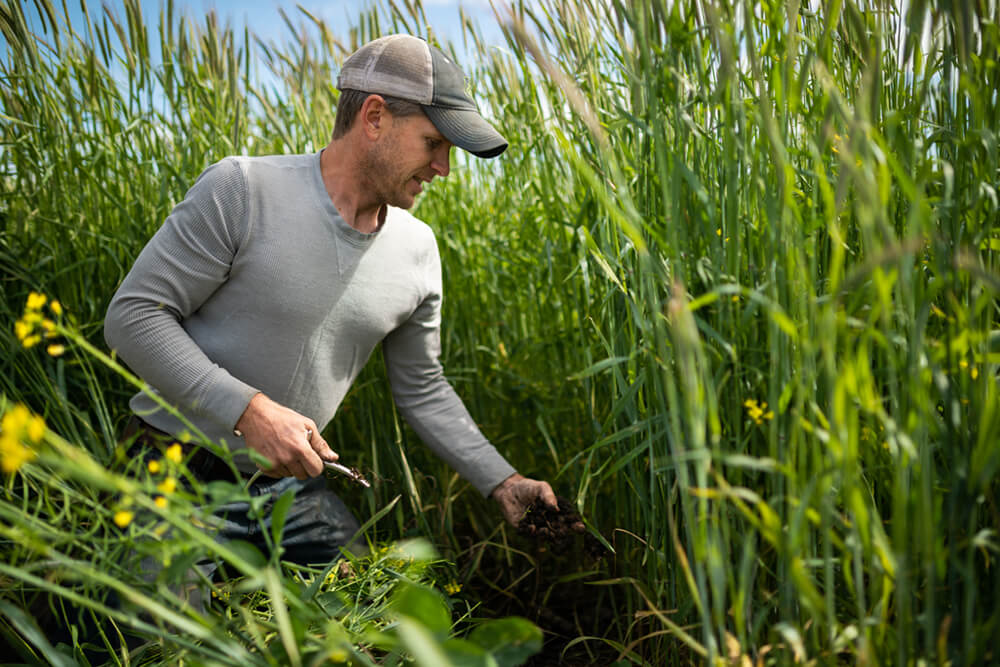
Many farmers and ranchers recognize that regenerative agriculture may be the only long-term solution to these problems. Regenerative agriculture is a management philosophy that seeks to improve soil health.
At its core, regenerative agriculture is the process of restoring degraded soils using practices (e.g., adaptive grazing, no-till planting, no or limited use of pesticides and synthetic fertilizer, etc.) based on ecological principles.
Regenerative agriculture strives to work with nature rather than against it. Regenerative agriculture is more than just being sustainable. It is about reversing degradation and building up the soil to make it healthier than its current state.
Regenerative Agriculture is a Mindset
Think of regenerative agriculture — and, more specifically, regenerative ranching, which focuses on grazing lands — as a mindset.
Regenerative agriculture does not have a specific set of practices that must be applied. To be successful, regenerative agriculture must be adopted and management practices adapted in ways that fit each unique operation and piece of land.
What Practices Are Common in Regenerative Agriculture?
Although regenerative agriculture doesn’t have a specific recipe, you may see many regenerative farmers and ranchers doing the following:
- Planting crops using no-till, which minimizes disturbance to the soil
- Incorporating cover crops and other diverse mixtures of forage species into monoculture crops and perennial introduced grasses
- Decreasing use of fertilizers and pesticides
- Using adaptive multi-paddock grazing (AMP, or adaptive grazing) — moving cattle and other pastured animals (sheep, goats, turkeys, bison, pigs) through smaller sections of the overall land and allowing grazed land adequate rest and recovery.
A major goal of regenerative agriculture is to make actual, measured improvements to soil health. This creates a ripple effect of positive benefits across the land and for the farmer or rancher’s profitability.
What Regenerative Agriculture is Not
Before we dig further into what regenerative agriculture is, let’s talk about what it is not.
Regenerative agriculture is not a marketing trend.
It may set a farmer or rancher up for success in various marketing programs, which would allow them to gain a premium price for their products. However, regenerative agriculture is not a marketing program in itself, like the organic program which has a USDA certification. Farmers and ranchers can manage regeneratively and sell through traditional commodity market venues, direct to commercial marketing chains, and direct to niche markets – whatever market makes the most sense for them.
Regenerative agriculture is not new.
While they may not have always called it “regenerative agriculture,” people have been practicing this type of management for centuries. In fact, regenerative agriculture asks agricultural producers to manage the land in a way that more closely mimics nature.
Why? Nature already provides the foundations for the farm (soil, water and sunshine). We just need to understand how to work with nature to maximize the ecosystem processes.
Regenerative agriculture is not a prescription.
There is no one-size-fits-all in regenerative agriculture.
There is no single recipe for success that can be adopted by everyone. In the same way, there is no static routine or management plan that a farmer or rancher can expect to yield the best results forever.
The reality is that nature is complex and always changing. While all ecosystems function in the same fundamental ways, and the basic soil health principles are relevant no matter where a person lives, each individual farmer or rancher must apply the principles in the best way for their particular operation. They must take into consideration their unique climate, geography, resources, skills and goals. We call this their “context.”
This is also why it is important to be careful making blanket statements that deem a particular practice or tool as “good” or “bad.” It’s all in the “how” of management or the application of management.
There are good “regenerative” practices that can hurt, not help, the land, if applied at the wrong time or under the wrong conditions.
There are also practices we typically want to avoid (like application of synthetic fertilizers and pesticides) that may be needed in the short-term to help “jump-start” an ecosystem until it can begin to be managed more naturally — without as many inputs.
The important thing to remember is that regenerative agriculture is a journey, not a destination. It is a farmer or rancher’s commitment to continually seek improvement of the soil and the land as well as in their profitability and quality of life.
Benefits of Regenerative Agriculture
Regenerative agriculture seeks to make measured improvements to the health and quality of the land — not just to sustain it.
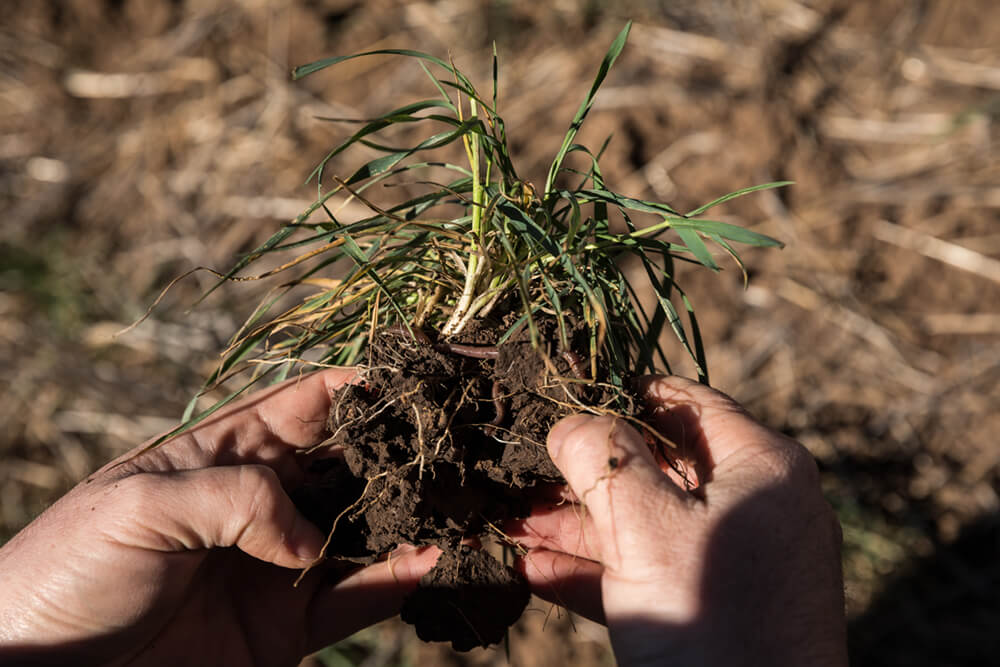
Regenerative agriculture promotes building soil organic matter and biodiversity.
Increasing organic matter in the soil is a major benefit. Organic matter is the decomposed life that helps grow more life — the forages, crops and livestock that become a farmer’s income.
Increasing biodiversity adds to organic matter, but it also helps the ecosystem perform at its best. Different plants and animals (including macro-organisms and microbes, like bacteria and fungi) play different — and important — roles. Taking out one player leaves a function undone.

Regenerative agriculture encourages healthier and more productive soil that is drought- and flood-resilient.
The more rainfall soil is able to hold, the less runoff and erosion will occur — and the more water that plants can use during drought. Less runoff also means that less soil is eroding and fewer synthetic chemicals are being washed into our lakes and rivers.
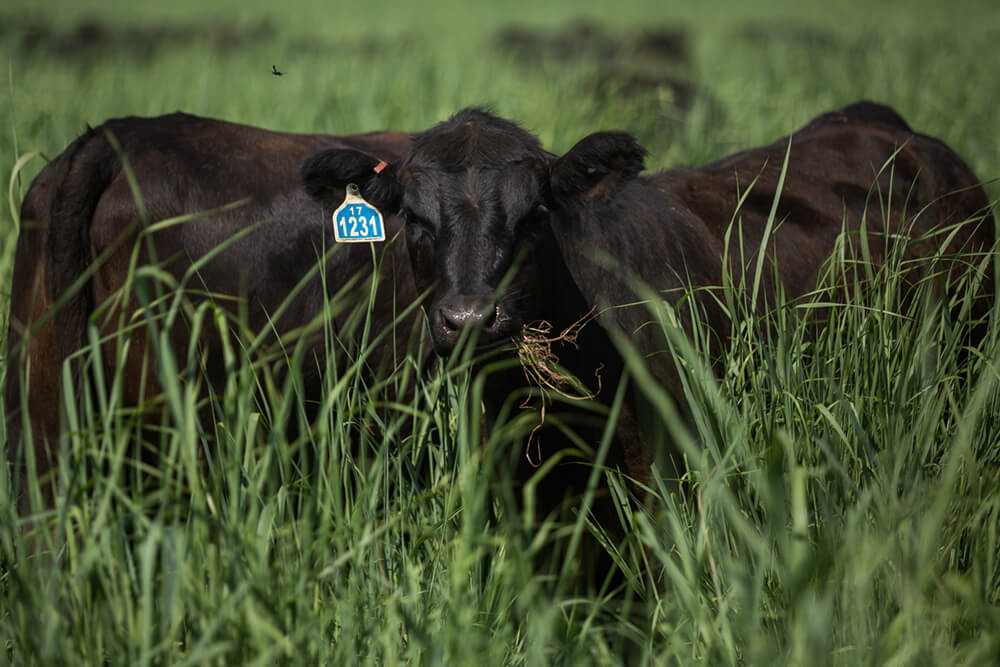
Regenerative agriculture advocates decreased use of chemical inputs and subsequent pollution.
By boosting the soil’s natural fertility, farmers can reduce their need for additional fertilizer.
By increasing diversity, both in terms of plants and animals, farmers and ranchers can build some resilience against — and a new mindset toward — pests. With regenerative ranching, “weeds” aren’t necessarily seen as a bad thing, because livestock can eat them. If cattle, sheep or goats are eating “weeds,” the farmer doesn’t need to spray as much herbicide.
In addition, increasing the soil’s water holding capacity reduces runoff.
All of this taken together means cost savings for the farmer or rancher and a cleaner environment — which benefits them and their neighbors.
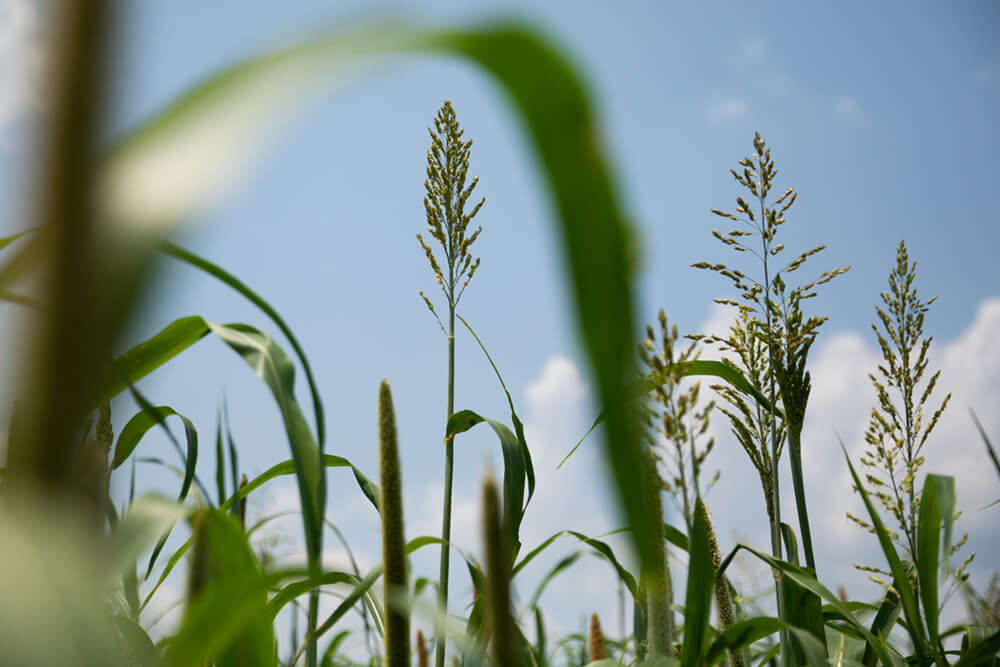
Regenerative agriculture boosts cleaner air and water.
Improving soil health leads to benefits that extend beyond the soil.
Soil acts as a natural water filter when it is fully covered by plants and plant residues. The healthier the soil, the better it can do its job. Ranchers can actually improve water quality with regenerative agriculture by keeping the land fully covered at all times and limiting the use of synthetic fertilizers and pesticides.
Plants are, in a way, air filters. They take in carbon dioxide from the atmosphere and turn it into sugar and oxygen. The healthier the soil, the healthier the plant, and the better this process works.
In addition, regenerative-agriculture practitioners reduce their input use. This typically means they also reduce the number of passes across a field in the tractor (and the amount of air pollutants).

Regenerative agriculture stimulates enhanced wildlife habitat.
Nowhere in nature do you see only a single variety of plant growing. Diversity is inherent in nature, so we seek to imitate that pattern.
Moving away from monocultures benefits wildlife (large and small, above ground and below), which in turn benefits the ecosystem and ultimately the operation. Again, nature likes diversity.
Many farmers and ranchers who adopt regenerative agriculture report seeing an increase in the number and variety of species on the land, including native grasses and forbs, birds, insects, earthworms, deer and other wildlife.
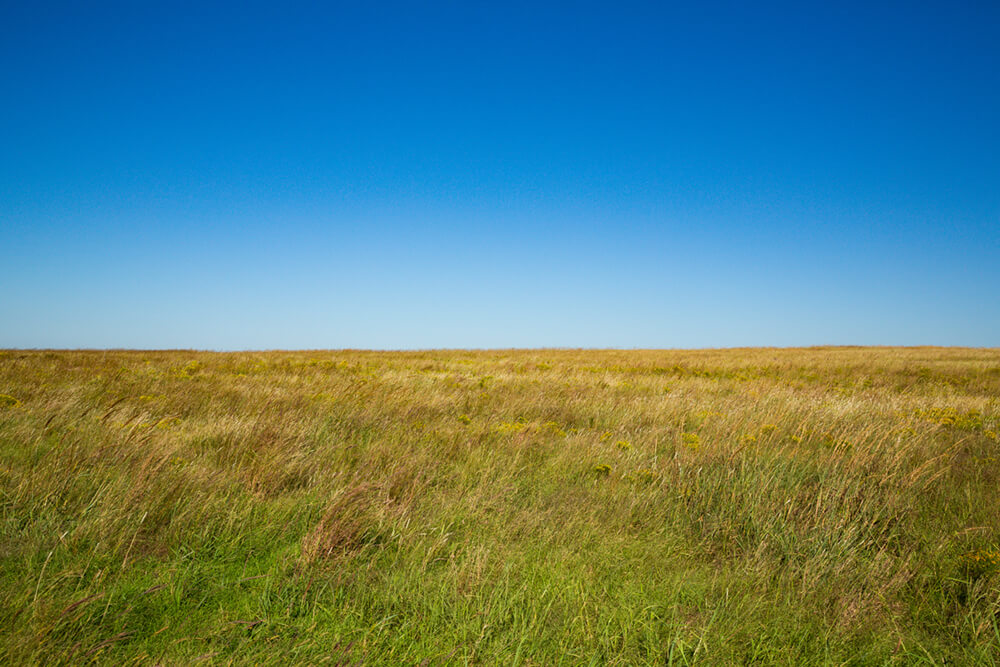
Regenerative agriculture assists capturing carbon in the soil to combat climate variability.
There is a lot of talk about removing animal agriculture to reduce greenhouse gases, but the truth is: The land needs animals.
Proper integration of livestock on grazing lands — which make up 655 million acres of U.S. land (the single-largest land use) — can actually rejuvenate the land’s health.
Part of this rejuvenation is through carbon sequestration. Plants have the ability to take in carbon from the air and store it in the soil with the help of soil microbes. Cattle and other livestock play roles in stimulating this carbon sequestration process through properly managed grazing.
This makes regenerative ranching a solution in today’s climate conversations.
Profitability Is Key for Regenerative Farms and Ranches
Regenerative agriculture recognizes that farmers and ranchers must be profitable. They have to make a living in order to continually reinvest in the land and its restoration.
Profitability is part of the equation of working with nature.
Many farmers and ranchers who practice regenerative agriculture often came to it out of a need to be more profitable. Many of them didn’t even realize they were on the regenerative ranching journey at first — they were just making changes to cut costs.
These ranchers inherently knew that the least costly way to feed a cow is with grass (not with hay and feed), which led them down a path to figure out how to grow more forage with fewer or no inputs.
This led them to understand that soil is the foundation of the whole system. They began to ask themselves, “How can we improve soil health?”
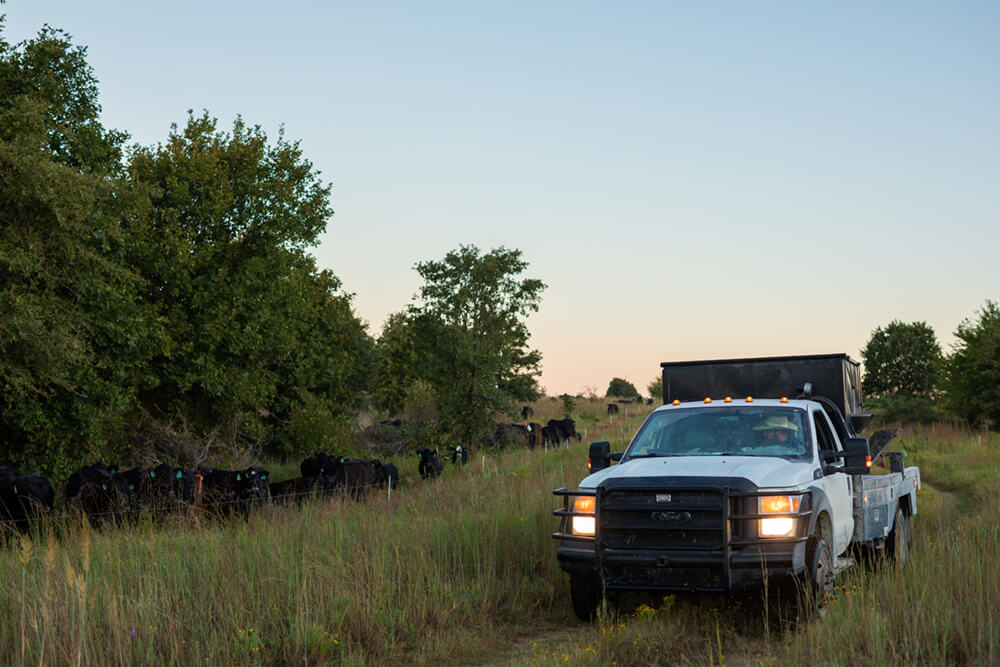
Soil Health Is the Foundation of Sustainable Agriculture
As these farmers and ranchers began managing within the ecosystem processes by using soil health principles, they began to see the difference in the soil.
Improving their soils helped them be more resilient, which gave them more consistent and productive production — even in the face of extremely variable weather patterns.
They saw greater profits because they were able to reduce inputs (fertilizer, pesticides, supplemental feed). Those transitioning to no-till also saved on fuel costs, with less time spent in the tractor.
Their cattle and other livestock were healthier, which saved on the costs of antibiotics and other animal health products.
Overall, it helped them be more sustainable. But it also moved them beyond sustainability — because they were making tangible improvements their land and operation.
Many regenerative ranchers have reported being able to grow more forage and to support more cattle and other grazing and pastured animals — like goats, sheep, chickens and pigs. This not only increases biodiversity on the ranch. It creates new streams of revenue.
Regenerative farmers and ranchers don’t necessarily chase the highest yields and output. Their key to profitability in regenerative agriculture is a focus on the margins and decreasing costs.
Regenerative Agriculture Principles and Practices
Regenerative agriculture focuses on outcomes — actual improvements made to soil health and to the overall quality and health of the land.
It recognizes the interconnectedness of the various parts of the land, which consists of soil, water, air, plants and animals together with the knowledge and skill sets of people who manage the entire system.
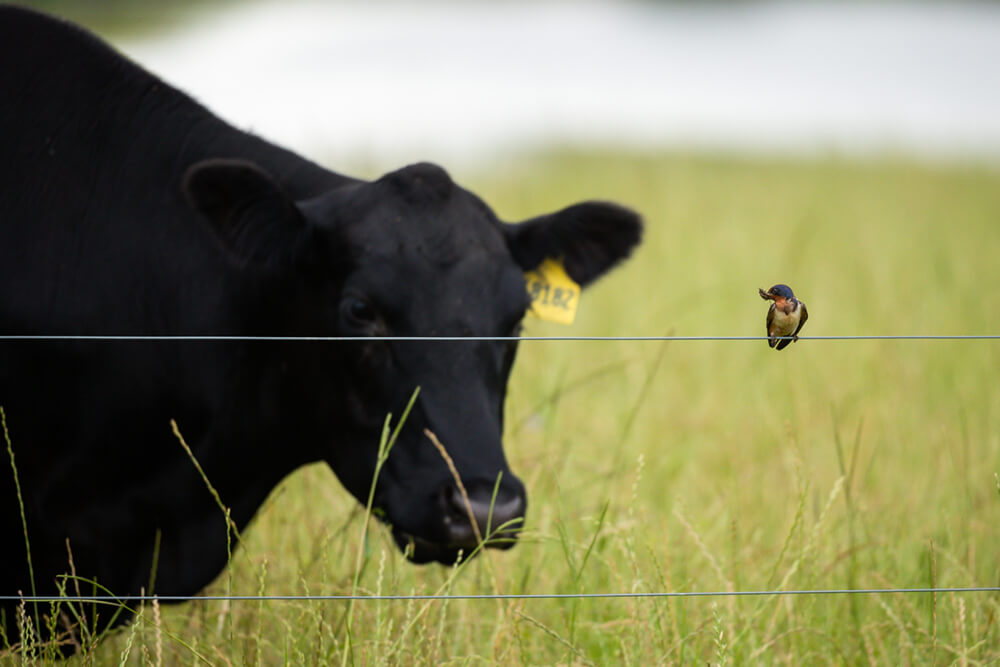
This means regenerative ranchers learn to work with the natural patterns of the land in order to enhance the land’s natural abilities to:
- Grow forage
- Provide food and other habitat for livestock and wildlife
- Support humans, not just through food and profitability, but also through water and air quality
Regenerative agriculture is management based on working within ecological principles.
Ecological principles recognize that all ecosystems (including individual farms and ranches) function through four interconnected processes, commonly called the four ecosystem processes.
The ecosystem processes are:
Energy Flow
It all begins with the sun. Plant leaves are the solar panels that drive the energy flow, commonly referred to as the energy cycle. The energy flow functions optimally when plants are allowed adequate recovery from grazing.
Water Cycle
The amount of water on Earth is finite, and it cycles through evaporation, transpiration and precipitation. One of the ways that water moves through the cycle is through its ability to permeate the soil.
Nutrient Cycle
In this system, energy and water are transferred between living organisms and the non-living parts of the environment. Frequent disturbances, such as grazing, help to maintain the above ground nutrient cycle. Biotic activity such as earthworms, insects and microbes in the soil, further improve the nutrient cycle. An optimal nutrient cycle depends upon good plant diversity and soil cover.
Community Dynamics
Community dynamics are the changes to community structure and composition over time, including changes in microbiology, plant and animal life.
All of these processes are essential and interconnected.
One major takeaway is that we need to have living plants actively growing as much of the year as possible. Life breeds more life, which is good for soil health and for profitability.
Soil Health Principles
The ecosystem processes are taking place on every farm and ranch in the world, as well as in every other natural community, whether forest, grassland or swamp.
Farmers and ranchers can use the following six principles of soil health, no matter where they live, as a guide for managing within the ecosystem processes for healthier land.
Know your context.
Farmers and ranchers must know their individual situation, including their climate, geography, resources, skills and goals. Knowledge of the pre-civilization plant and animal communities is also beneficial. They need to understand how the ecosystem processes function on their land so that they can work with those processes. What works for one farmer or rancher may not work for another, because their contexts are different. Regenerative ranchers find what works for them while recognizing that their context is always changing. They are willing to learn, grow and adapt with their context.
Cover the soil.
Soil health cannot be built up if the soil is uncovered or is moving. Using dedicated plants for grazing, cover crops and crop residue minimizes bare ground and builds soil organic matter. Plant cover further protects the soil from erosion and serves as a barrier between the sun and raw soil, preventing escalated soil temperatures that can destroy soil microbial life.
Minimize soil disturbance.
Mechanical soil disturbance, such as tillage, alters the structure of the soil, reduces organic matter and limits biological activity. If the goal is to build healthy, functional soil systems, tillage should only be used in specific circumstances.
However, tillage is not the only disturbance. Grazing, fire, pesticide applications, etc., are all soil disturbances. For this reason, with grazing lands, one must ensure that the timing, frequency, intensity and duration of these management activities are implemented in a planned manner mimicking what would occur naturally in the absence of man.
Increase plant diversity.
Increasing plant diversity creates an enabling environment and catalyst for a diverse underground community. In nature, grasses, legumes, and forbs all work together in a native, diverse rangeland setting.
The complex interactions of roots and other living organisms within the soil define the soil’s water holding capacity, affect carbon sequestration and enable nutrient availability for plant productivity.
Maintain continuous living plants/roots.
Maintaining continuous living plant roots is required to keep the soil biology processes working, no matter the season. Soil microbes use active carbon first, which comes from living roots. These roots provide food for beneficial microbes and spark beneficial relationships between these microbes and the plant.
Integrate livestock.
Research, practical application and common sense tell us the same thing: Livestock are a necessity for healthy soils and ecosystems. The Great Plains evolved under the presence of animals and grazing pressure.
Soil and plant health is improved by proper grazing, which recycles nutrients, reduces plant selectivity and increases plant diversity. As with any management practice, grazing is a tool that requires intentional application.
Adaptive Grazing as a Regenerative Tool
Grazing plays into maximizing each ecosystem process, but grazing must be managed properly.
Well-managed grazing is great. Overgrazing is devastating to both the land and the rancher’s profitability.
Adaptive grazing (also referred to as AMP grazing) is a grazing technique in which ranchers continually evaluate and adapt to the changing conditions on their ranches.
They are primarily monitoring how much forage they have so that they can match forage availability to the pounds of cattle (and/or other livestock) they will graze on their acres while leaving adequate residue to facilitate recovery and soil cover.
This style of managed grazing also involves animal movement, plant rest and plant recovery to mimic the historical grazing patterns of the buffalo.
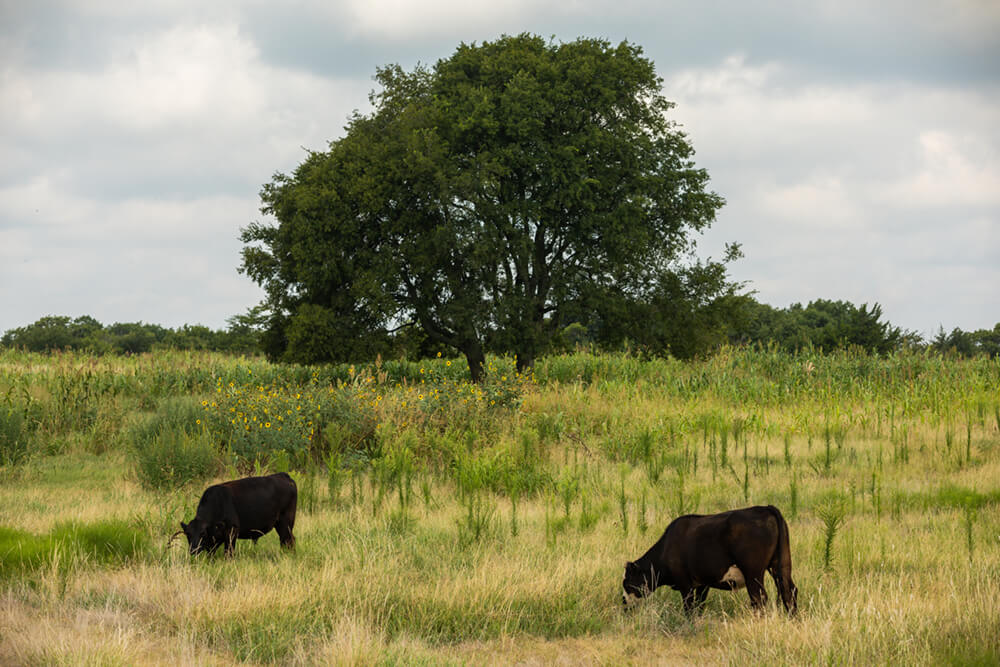
Adaptive grazing is more than just traditional rotational grazing. Often, ranchers move their cattle once or more each day. However, there is no set schedule. The key attribute of adaptive grazing is actively managing rest and recovery periods based on season and soil moisture conditions.
This system is adaptive, which means ranchers make grazing management decisions based on how the land is performing on any given day.
Regenerative ranchers make grazing management decisions for each pasture or paddock based on:
- Frequency (how often a particular pasture/paddock is grazed and rested)
- Timing (when/what time of year a pasture/paddock is grazed and rested)
- Duration (how long a pasture/paddock is grazed and rested)
- Intensity (how much grass per how many cattle (or pounds of cattle) is grazed at a time)
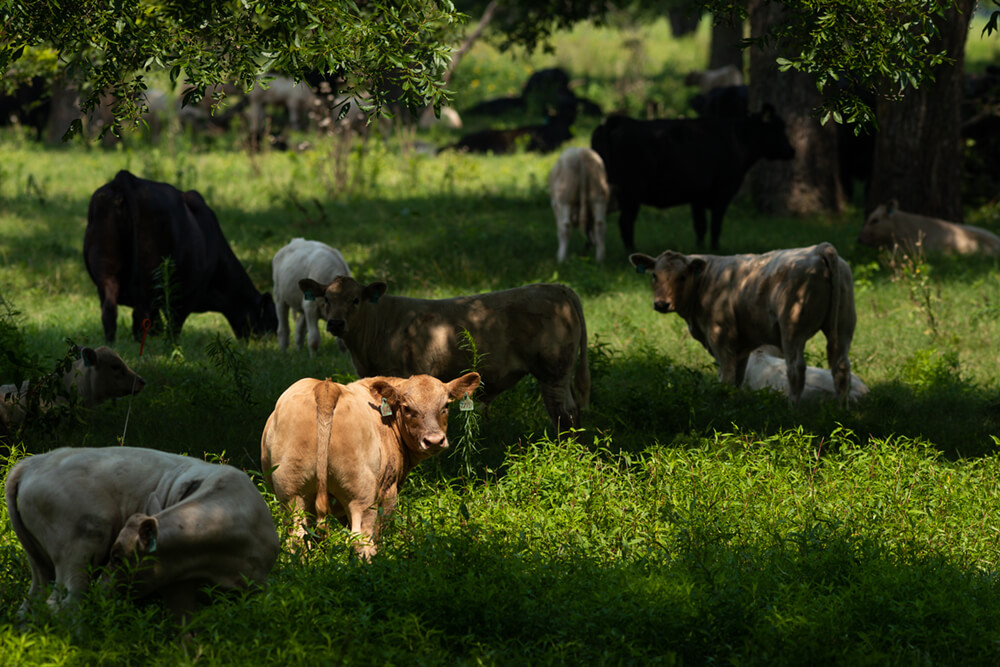
Adaptive grazing encourages ranchers to get creative. They may try a different size or shape paddock, or they may add or remove types of livestock. Their livestock rotations may also change.
The land likes a managed amount of disruption. It’s similar to how we become stronger through our challenges. Nature can help build resilience into our agricultural systems if we mix things up a bit.
Join the Regenerative Ranching Journey
Regenerative agriculture is a way to build the health of the soil — and ultimately entire farms and ranches — by tapping into nature’s natural processes. It invites farmers and ranchers to not simply sustain the land’s health, but to leave it better than they found it.
Learning to work with nature, rather than against it, will benefit us all in the end: the soil, water, air, plants, animals and people. Farmers and ranchers don’t have to choose between benefiting the land or their profitability. They must be profitable in order to make long-term decisions for the land.
The health of our soils can be regenerated with an understanding of how the land functions through the four ecosystem processes (energy flow, water cycle, nutrient cycle and community dynamics).
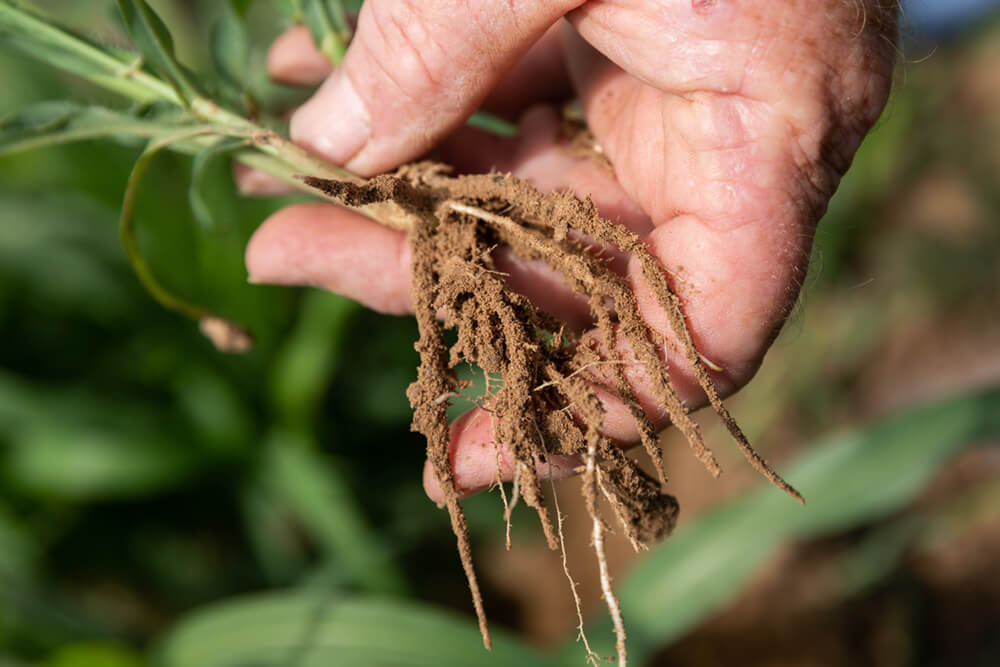
Put into practice, each regenerative farmer or rancher applies the six soil health principles in the ways best for their unique land and operation:
- Know your context.
- Cover the soil.
- Minimize soil disturbance.
- Increase plant diversity.
- Maintain continuous living plants/roots.
- Integrate livestock.
We hear so many stories of farmers and ranchers who have been successful in regenerative ranching. They have created win-win situations for both themselves and their profitability as well as the long-term health of the land.
They’ve seen benefits to the health of their animals, to their quality of life, to the water and air quality that their communities depend on, and to their bottom lines. They are more resilient in drought because their soils soak up more precipitation, which means they also do better with heavy rainfall.
However, we know the journey can be challenging.
Regenerative agriculture requires a different mindset than has been passed down to most of us. Foundational, science-based research and economic knowledge about the impacts of regenerative management are growing fields. There is also limited access to information that farmers and ranchers can use in day-to-day operations.
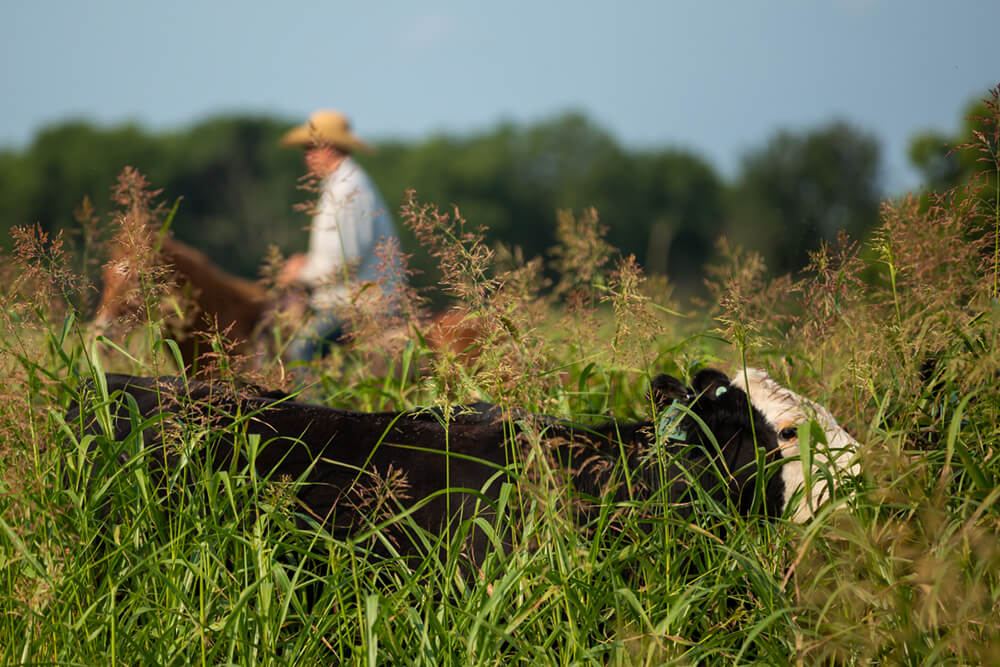
Noble Research Institute has committed its 14,000 acres of grazing lands and livestock operations in southern Oklahoma to provide education and demonstration for supporting others’ transitions from conventional to regenerative ranching. As of 2021, Noble has transitioned to regenerative management on these acres. The organization will openly share both challenges and successes in its own regenerative journey to benefit others’ experiences.
We invite you to join us in this regenerative ranching journey. Our 75 years of working with farmers and ranchers have shown us that agriculture and land stewardship are paths best traveled with others.
In order to keep up to date on the latest in regenerative agriculture and regenerative ranching, sign up to receive our emails. We’ll pass along practical knowledge that you can apply on your own operation.
Resources for Regenerative Ranching
To get started, we invite you to take a deeper dive into the principles of regenerative agriculture. These principles apply no matter where you live and no matter how much — or what kind of — land you manage. Understanding them is the first step to considering how you might be able to implement them on your land.
Take a look at these top resources for ranchers learning about regenerative agriculture.
Here’s a quick reference for understanding various terms you may hear in regenerative ranching.
If you’re interested in supporting Noble Research Institute’s goal to help farmers and ranchers across the U.S. restore millions of acres of degraded grazing lands, visit www.noble.org/about/giving/online.
Subscribe for FREE to Noble Rancher
Interested in reading more about Regenerative Agriculture? Sign-up for our free weekly email newsletter where we take a weekly deep dive into regenerative ranching practices and principles.
![ERG[1]](https://www.noble.org/wp-content/uploads/2023/11/ERG1.jpg)
![website-cta-options5[1]](https://www.noble.org/wp-content/uploads/2023/11/website-cta-options51.png)
![2023-11-07_14-53-54[1]](https://www.noble.org/wp-content/uploads/2023/11/2023-11-07_14-53-541.png)